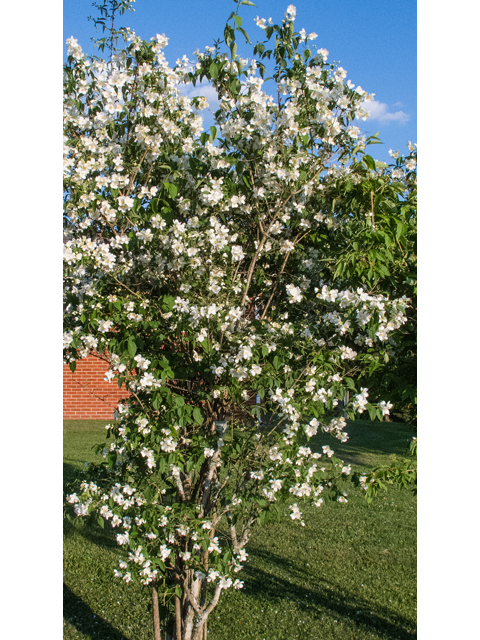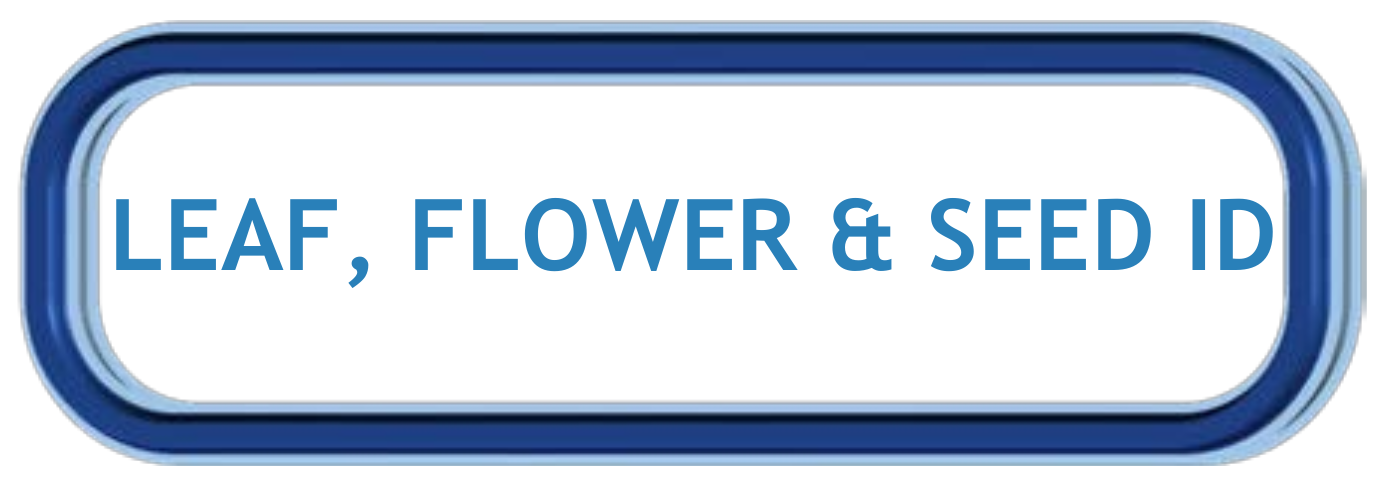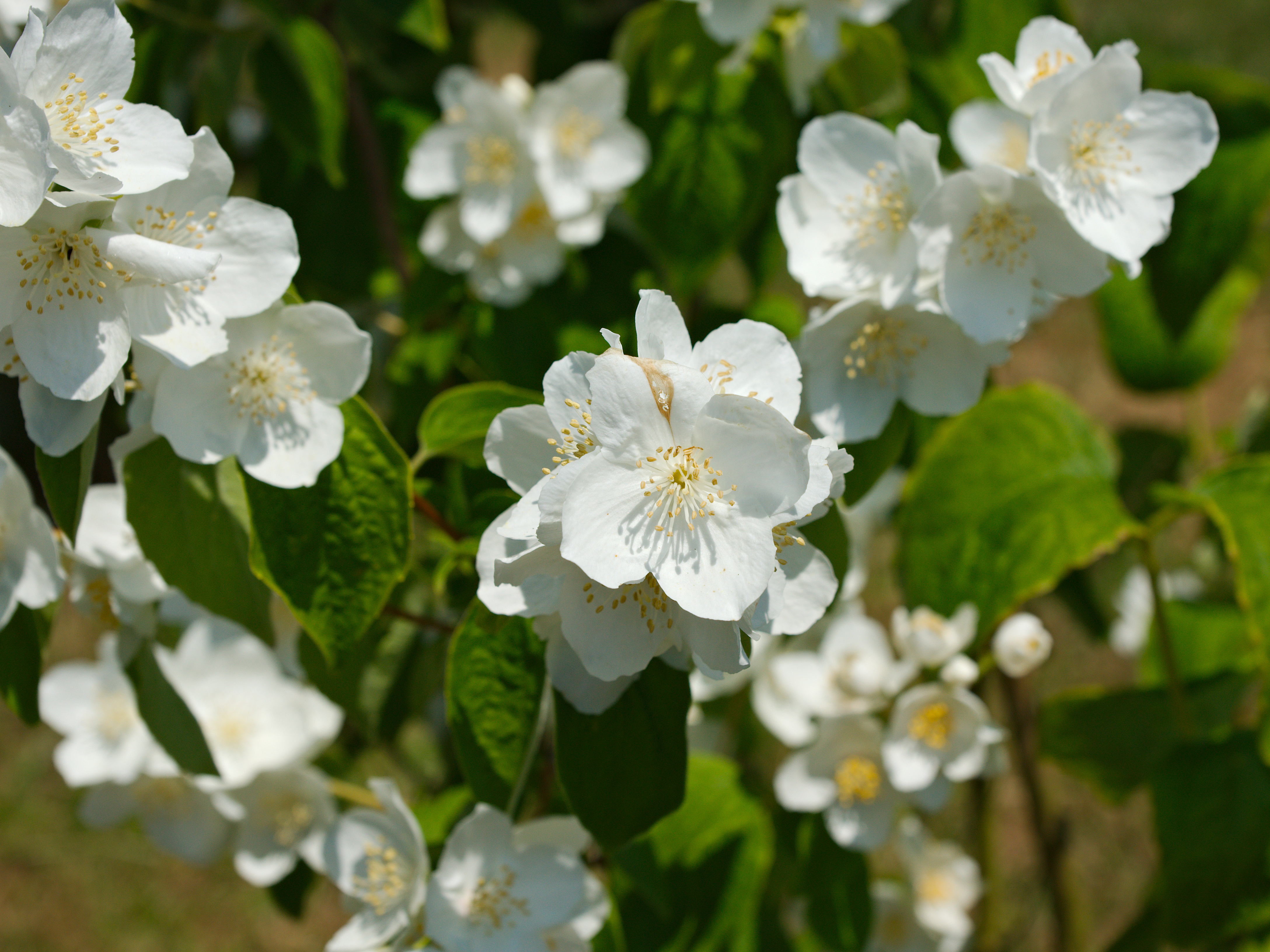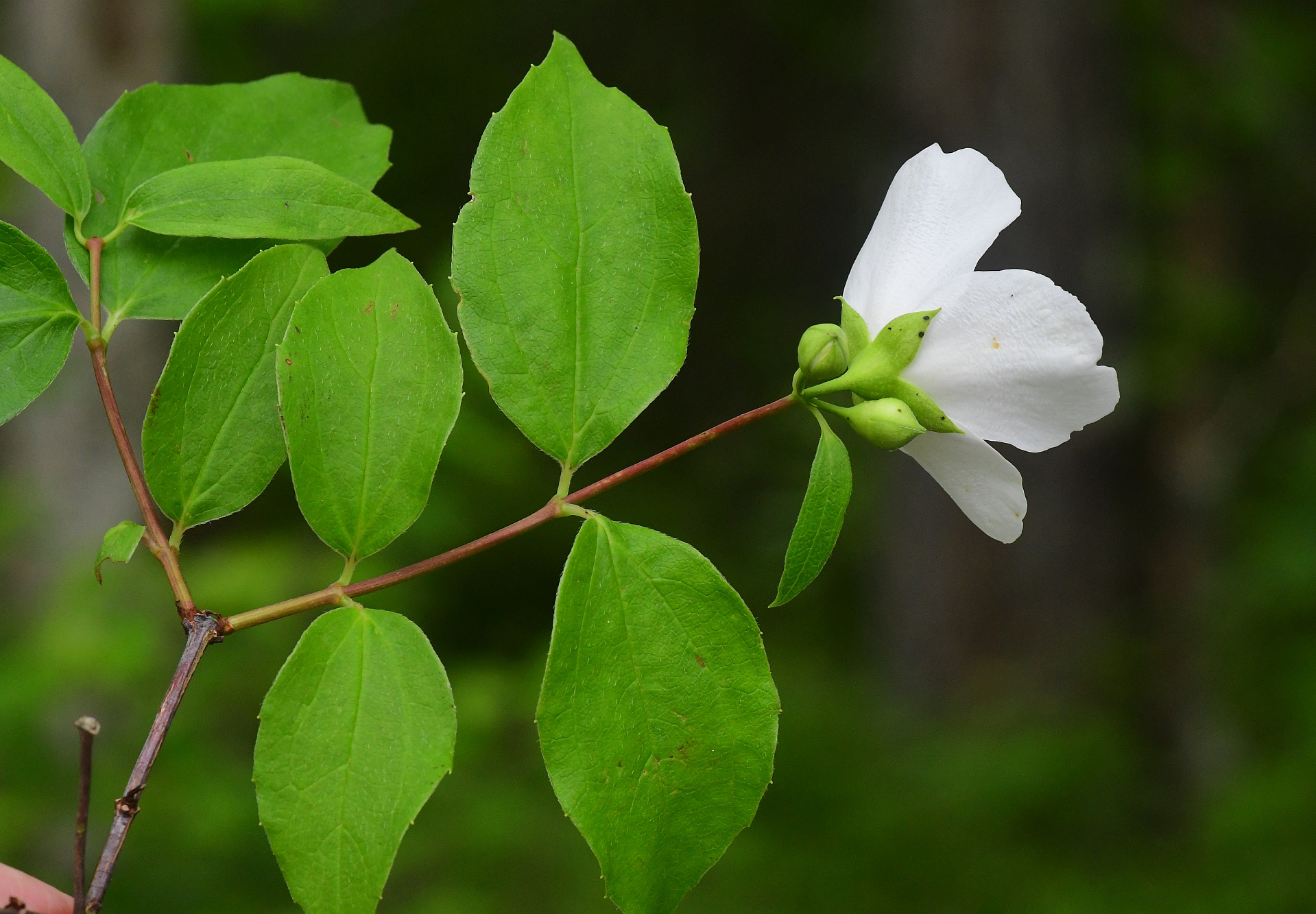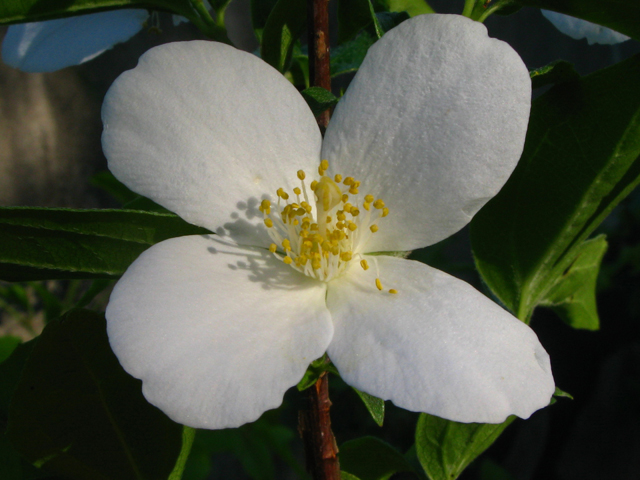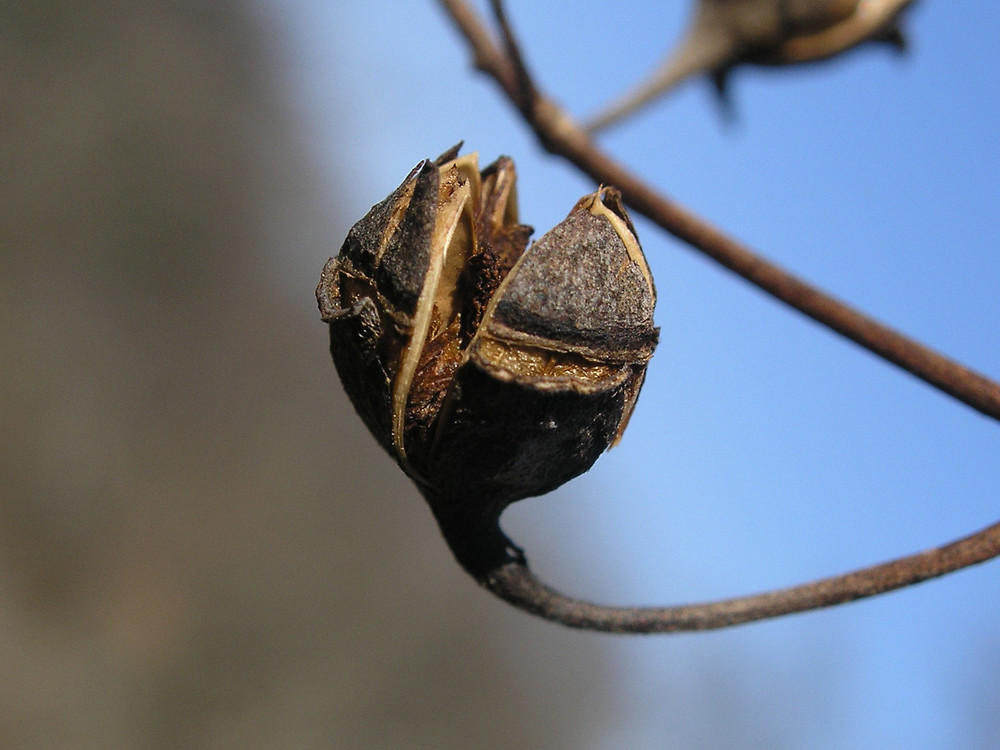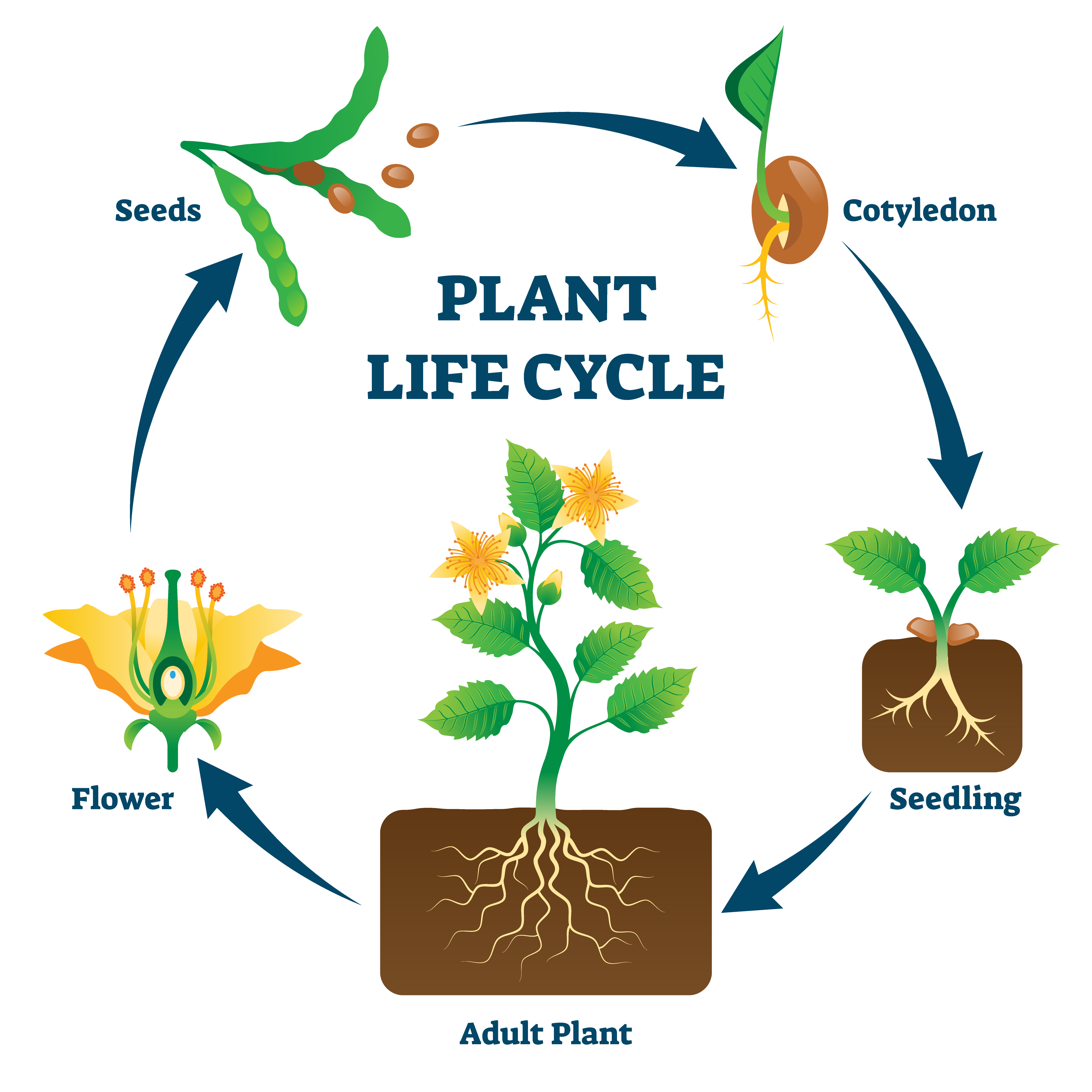Dig into Plants: Mock Orange
| Mock Orange Other Common Names: Scentless Mock Orange, English Dogwood Scientific Name: Philadelphus inodorus Native to Alabama: Yes |
|
Mock Orange Lady Bird Johnson Wildflower Center - Stephanie Brundage Click on image to enlarge it |
Learn more about...
| Ecological Benefits | ||
| This plant provides food for: | ||
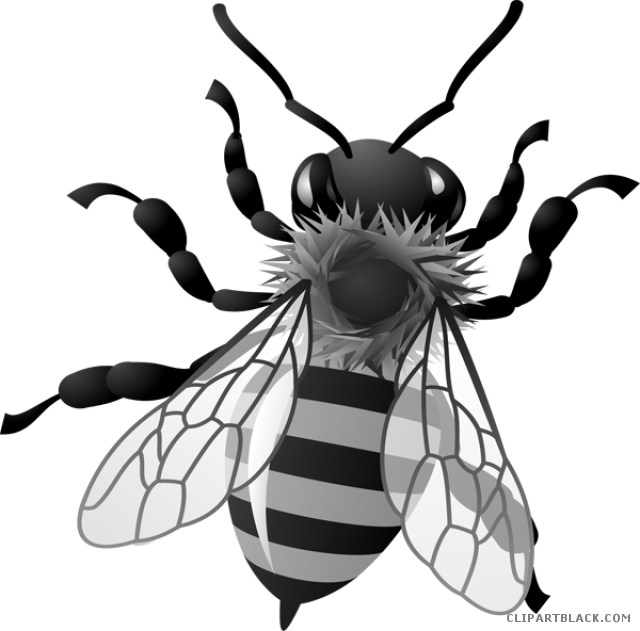 |
 |
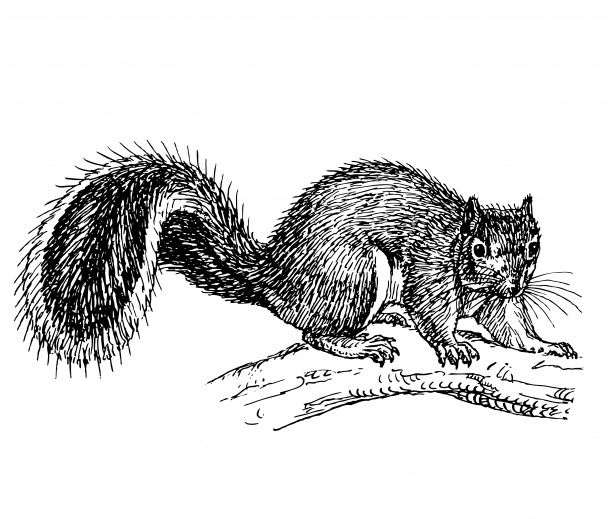 |
| Native Bees | Other Birds | Small Mammals |
| Other Plants Found in Alabama with Similar Ecological Benefits: |
||
| Hoary Mock Orange (Philadelphus pubescens) |
||
|
|
||
| Habitat Requirements | |||
| This plant prefers: | |||
|
Full Sun
(6+ hours of sun per day) (2-6 hours of sun per day) |
 Average Watering |
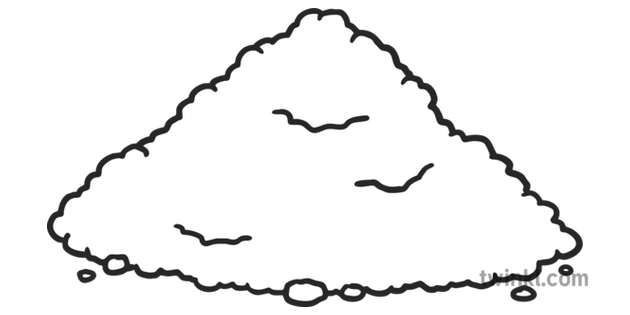 Well-drained, Sandy, Loamy, Clay, or Moist soil Well-drained, Sandy, Loamy, Clay, or Moist soil |
|
| Leaf, Flower & Seed Identification | |||||
| LEAF DESCRIPTION |
Mock Orange Leaves
© Steve R. Turner, Missouriplants.com Click on image to enlarge it |
||||
| Leaf Characteristics Chart (PDF) | |||||
| Shape: | Margin: | Arrangement: | Form: | ||
| Ovate | Entire/Smooth | Serrate | Opposite | Simple | |
|
|
|
|
|
|
|
| Description: | |||||
| 3-6 inches long and 1-3 inches wide; darker green on upper surface and lighter green underneath; upper surface does not have hairs while under surface may have few hairs; prominent veins on leaves | |||||
| FLOWER DESCRIPTION |
Mock Orange Flower
Lady Bird Johnson Wildflower Center - Alan Cressler Click on image to enlarge it |
||||||
| Flower Shapes Chart (JPG) | |||||||
| Color: White |
Shape: Cross |
Bloom Months: May - June |
|||||
| Description: | |||||||
| 1 inch across; white flowers occur in clusters of 3; petals are cup shaped; numerous yellow stamens in the center; somewhat fragrant scent | |||||||
| SEED DESCRIPTION |
Mock Orange Fruit
Bruce Patterson - Go Botany Click on image to enlarge it |
||
| Type: Fruit - Capsule |
Description: Dry, 4-sectioned capsule; less than one inch in length and width; splits open when ripe |
Months in Seed: Summer |
|
| Plant spreads by: | |||
| Seeds | |||
| BARK DESCRIPTION |
|
|
| Color: Light brown to orange-brown |
Texture: Exfoliating (shredding); Appears paper-like |
|
| Description: | ||
| When tree is young, bark is light brown; develops into an orange-brown color with a shredding-like texture; upward branching pattern | ||
ADDITIONAL RESOURCES FOR TEACHERS
| Quick Fact Sheet (Condensed Species Info) |
Plant ID Sign: Ready as-is PDF |
Plant ID Sign: Editable Word Doc |
QR Code (Links to this Webpage) |
INFORMATION SOURCES FOR THIS PLANT
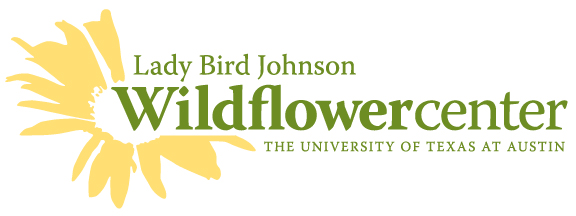 |
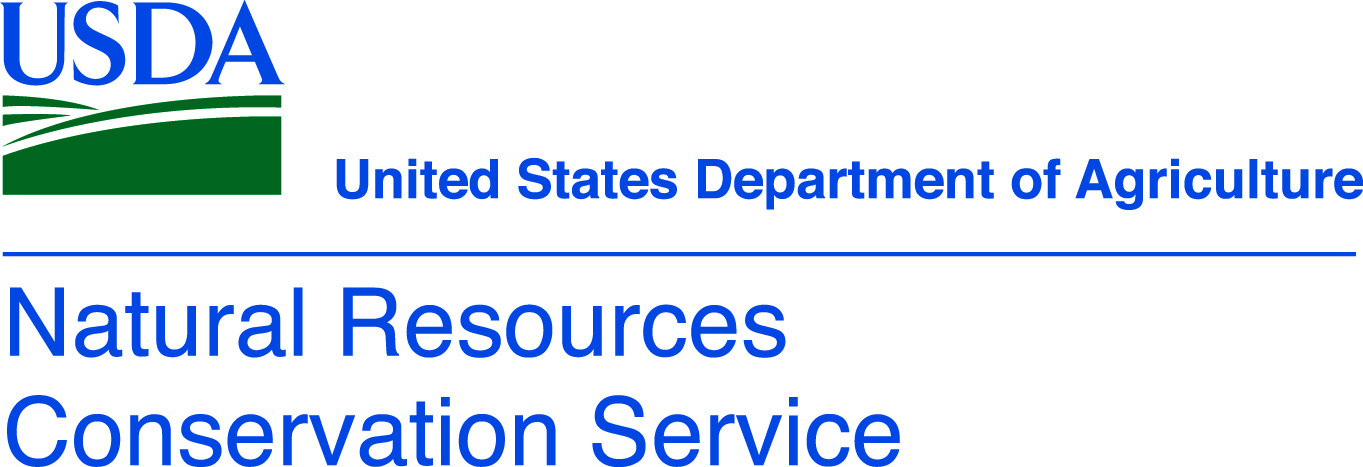 |
|
|
|
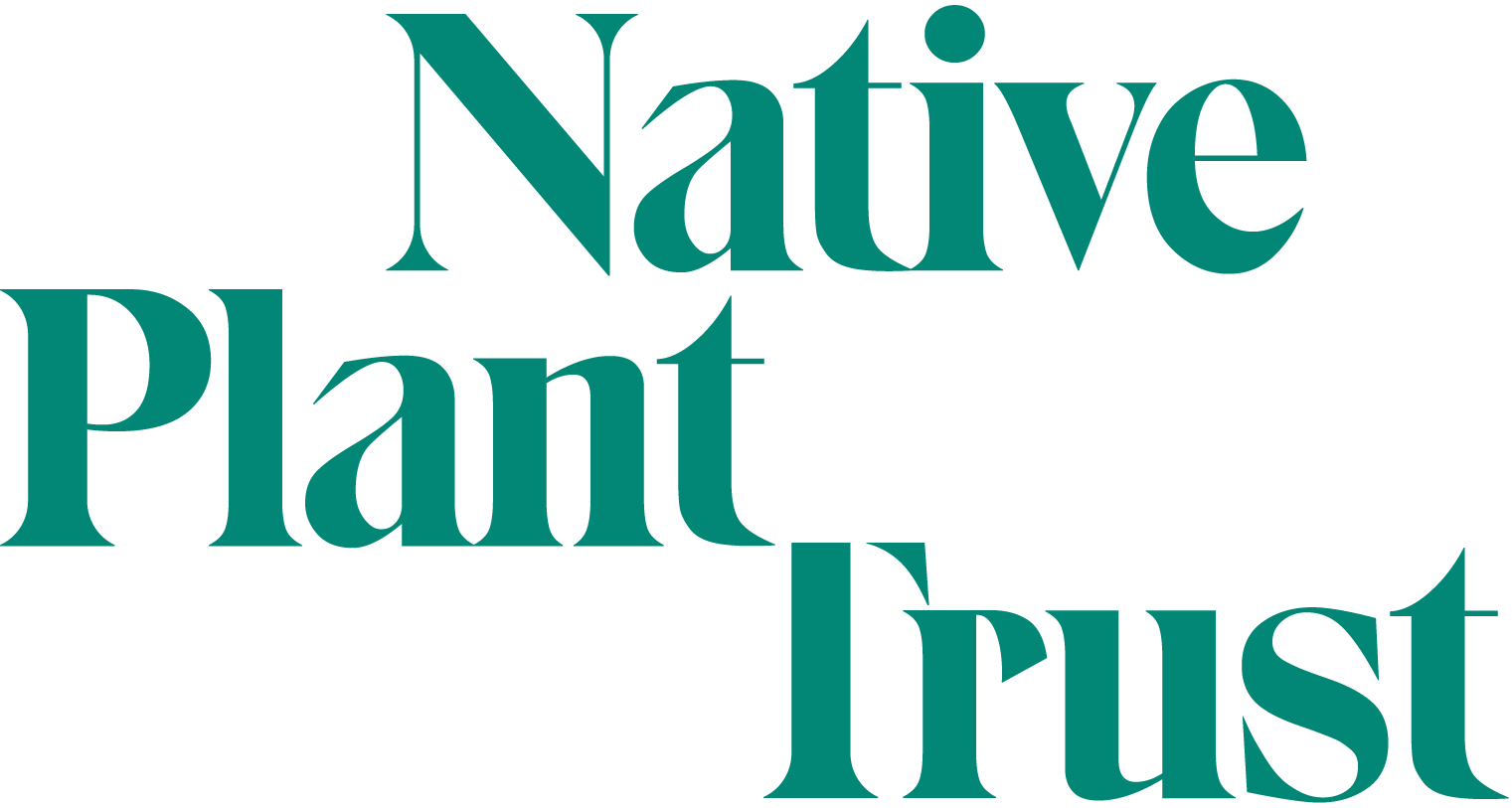 |
|
|
|
.
 Wildlife Tag
Wildlife Tag
